How to water spathiphyllum at home, features of flower care

Spathiphyllum is a houseplant of the Araceae family. It belongs to those representatives of the flora that, with proper care, can delight with their flowering throughout the spring-summer period.
To spathiphyllum became the highlight of your interior and brought harmony to the family. You need to learn how to properly water spathiphyllum at home.
Content:
- How to water spathiphyllum at home
- Irrigation intensity depending on the season
- How to water spathiphyllum during flowering and after transplantation
- Does the plant need fertilizing, what fertilizers to use?
How to water spathiphyllum at home
Although the flower is unpretentious in care, which attracts ordinary people who want to decorate their home and novice florists, humidity conditions are of no small importance for it.
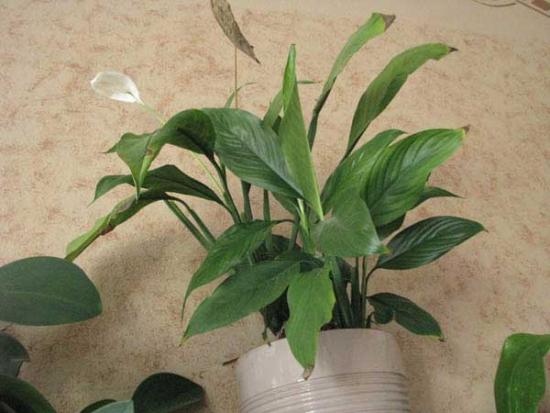
Watering directly affects the flowering process and appearance spathiphyllum. If there is not enough water, the leaves of the flower will fade and their corners will droop down.
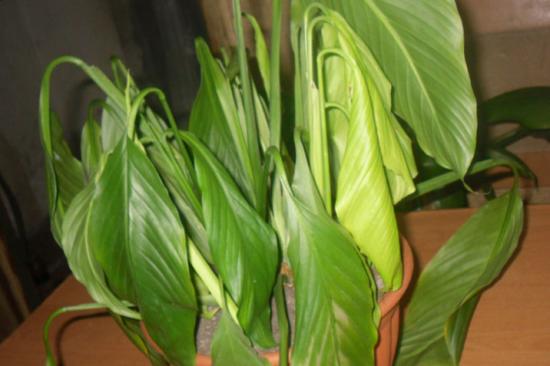
Basic rules of watering:
- main principle glaze It is rare to carry it out with a copious amount of water (1 ruble every 3 days, if the soil has already dried out a little). Typically, the need for the procedure is indicated by drooping spathiphyllum leaves. If after 5-7 minutes. the container under the pot is dry, then the liquid was not enough and its volume needs to be increased;
- when performing manipulations to moisten the soil in a pot, i.e.roots of the plant, it is necessary to take into account the time of year, since this changes the humidity and temperature of the room. This is reflected in the volume of water used and the number of watering procedures;
- The soil in the pot should always be slightly moist. If the soil is completely dry, then you have missed the time for the required action;
- For irrigation, you need to take clean and soft water, the chlorine content of which is minimal. 2-3 days before the manipulation, it is poured into a container to allow it to settle. You can use various filters that remove harmful impurities that can corrode the roots;
- the water must be warm (18-23 degrees);
- watered apply the flower in a thin stream in a circle so as not to cause cracking of the soil layer or the formation of pits in it. In this case, it is better to use a watering can with small holes. If water flows into one place, this will eventually cause the root system to become exposed;
- The leaves of the flower should be wiped daily with a damp cloth or sprayed (1-2 rubles depending on humidity conditions). It wouldn't hurt to have a decorative fountain or humidifier nearby;
- too frequent watering also negatively affects the condition of spathiphyllum, which is reflected in the yellowing of its leaves or the appearance of brown spots on their surface. Constant exposure to waterlogged soil will lead to stagnation of growth and gradual rotting of the plant.
Some florists advise watering through a tray, the height of which should reach the middle of the pot. It fills with water, and after 30 minutes. it is drained.
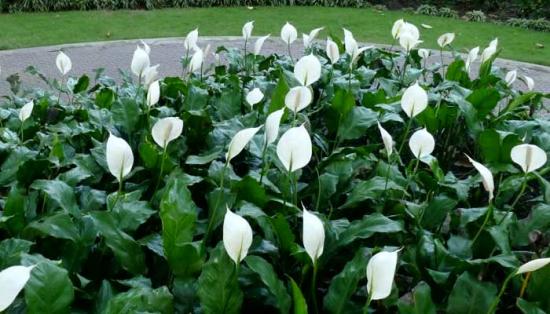
During hot and dry weather, the bottom of the pan is covered with moss or sand to retain moisture, which will prevent the soil from drying out quickly.
Irrigation intensity depending on the season
As mentioned earlier, when carrying out the procedure for moistening the root system of a plant, it is necessary to pay attention to the temperature and humidity of the air, which have significant differences at different times of the year.
Winter period
From December to February life processes spathiphyllum slow down, so it does not need moisture so much and watering is carried out 1 r. in Week. The exception is premises in which heating systems that are turned on cause a dry microclimate. Therefore, the number of waterings can be increased to 2 r.
The flower will spontaneously begin to evaporate liquid from the surface of the leaves, which will gradually normalize air humidity and the need for additional watering will no longer be necessary.
It is recommended to carry out the procedure in the morning with a moderate amount of water. Also, do not forget about spraying spathiphyllum leaves from a spray bottle. This will not only replenish it with moisture, but also cleanse the plant of dust that accumulates on its surface during the day.
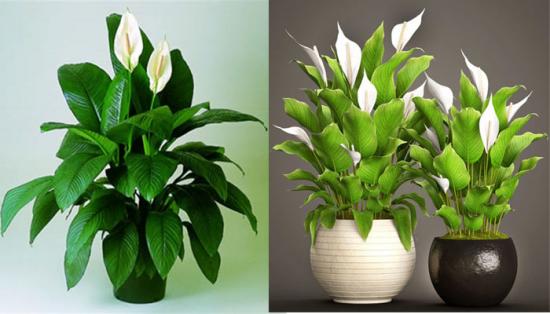
If you have a room humidifier, you don’t have to worry about additional watering in winter.
Summer season
The summer months are characterized by hot weather and fairly low humidity, so the root system spathiphyllum needs careful hydration. Watering is recommended to be carried out 1 r. in 3 days (in the evenings) with a copious amount of pre-settled water. The number of wiping and spraying of leaves also increases to 3-5 r. in a day.
An additional way to preserve moisture is to place a pot with a flower in a tray, the bottom of which is lined with pebbles or expanded clay.These materials prevent rapid evaporation of water, ensuring sufficient soil moisture even on the hottest days.
Spring and autumn
These periods are characterized by various changes in air temperature, which is reflected in its humidity. Therefore, spathiphyllum is watered in the autumn and spring months depending on weather conditions. If the days are warm enough, then the volume of water when watering is increased. In case of cold weather, the number of procedures and the volume of water used are reduced.
How to water spathiphyllum during flowering and after transplantation
In order for the plant to bloom and the flowering period to last as long as possible, bringing beauty and harmony to your home, it is necessary to regulate the soil moisture in the pot.
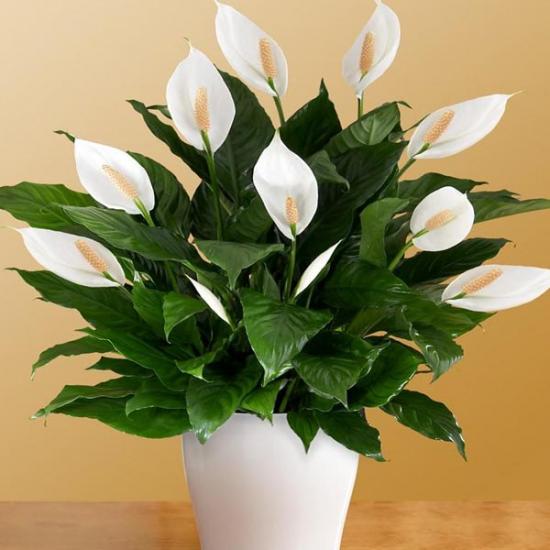
In this case, the following rules must be observed:
- when spraying, it is important that drops of water do not fall on the flower itself;
- if flowering began in the spring, then the volume of water used for irrigation is regulated depending on the microclimate conditions in the room. In summer, spathiphyllum is usually watered more often and with a large volume of liquid;
- we must not forget that the water must first be purified or settled and during watering its temperature should be from 18 to 23 degrees;
- do not allow excessive stagnation of water at the bottom of the pot.
Spathiphyllum is transplanted annually in the spring, while the flower has not yet bloomed. The room temperature should be at least 20 degrees.
The lifespan of a plant at home is from 3 to 10 years, so after 5 years it is allowed to transplant a flower 1 r. in 2 years Capacity for the growth of spathiphyllum, a not very large one is selected, since the presence of excess space causes a reduction in flowering time.This happens because the plant will tend to grow foliage.
After the spathiphyllum has moved into a new pot, it needs to create conditions of high humidity.
This will ensure rapid acclimatization of the plant and entry into the flowering phase. For this purpose, it is recommended to wrap the container with the flower in a plastic bag to create a kind of greenhouse. You need to make a hole in the bag to provide ventilation.
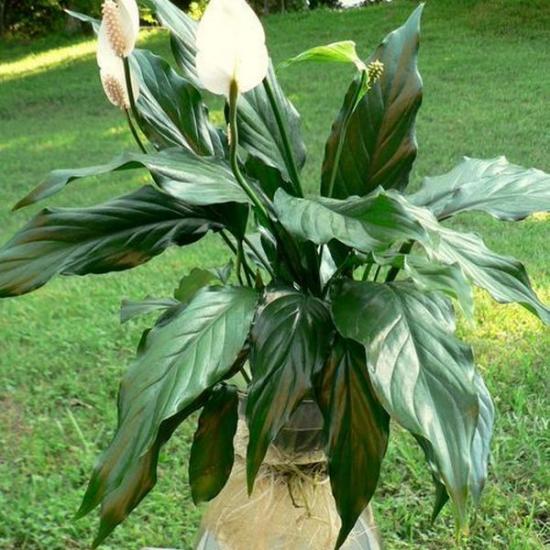
Watering is carried out 1-2 r. per day. In the absence of such a greenhouse, the leaves of the flower need to be additionally sprayed several times a day.
Does the plant need fertilizing, what fertilizers to use?
Like any plant, spathiphyllum needs feeding, providing protection for its roots from various pests.
The procedure is carried out as follows:
- after transplantation, fertilizers are not applied for 1.5 months;
- at the end of the term it is carried out 1 p. in 2 weeks (warm season) and 1 r. in 30 days (winter period). At a room temperature of 16 C, fertilizing is not carried out;
- before and after the procedure, the plant is thoroughly watered with warm water to prevent burns to the roots and uniform distribution of nutrients;
- fertilizing is carried out with organic and mineral fertilizers that do not contain lime;
- dry additives are diluted in the proportion of 1 g per 1 liter of water, and liquid additives - according to the dosage specified in the instructions;
- on hot days, fertilizing is carried out in the evening hours, when the temperature drops;
- the liquid should not get on the foliage or the flower itself, as this will lead to burns;
- fertilize spathiphyllum foliar method;
- If a disease is detected in a plant, then it is necessary to eliminate the problem and only feed it after 2-3 weeks.
For spathiphyllum, fertilizers based on nitrogen, potassium and phosphorus are used. Potassium is a water balance regulator and ensures the transport of nutrients to the foliage from the roots.
By participating in the synthesis of ATP and phytohormones, phosphorus accelerates the process of flowering and ripening. Both components help increase plant resistance. Lack of nitrogen results in slow growth or lack of flowering.
The mineral complexes also include the following elements:
- iron;
- magnesium;
- zinc;
- boron;
- manganese;
- copper.
At home, products such as yeast, banana peels, tea leaves, whey and coffee grounds are suitable as fertilizers.
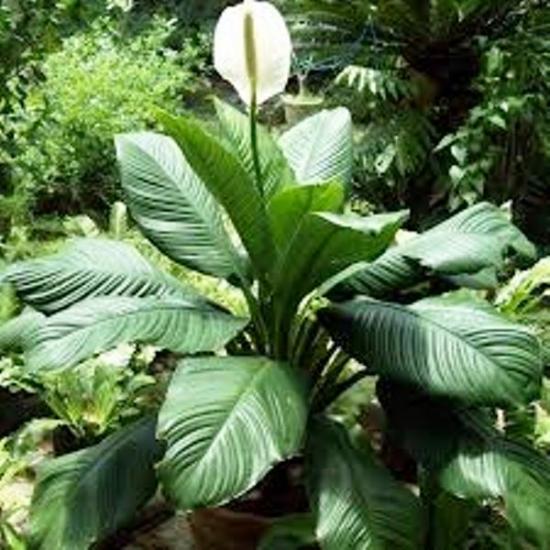
The following microbiological complexes can be purchased in specialized stores:
- Phosphatophyte;
- Azotovite.
They cannot be used in conjunction with mineral supplements.
The most popular brands on the fertilizer market:
- Mister Color;
- Garden of Wonders;
- Agricola;
- Florizel;
- Green house;
- Vilagro.
Timely feeding will help prevent the occurrence of diseases in your flower and provide it with the nutrients necessary for normal growth and timely flowering.
Many single women try to grow spathiphyllum in the hope of finding happiness, but not everyone thinks about proper care for the flower.
Proper watering will be the key to creating a beautiful interior in your home and achieving your desired goal.
When purchasing a flower, be sure to consult with the seller about the rules for caring for it.
You can learn more about caring for spathiphyllum by watching the video:

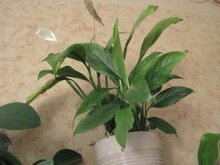





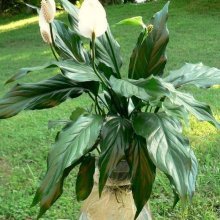
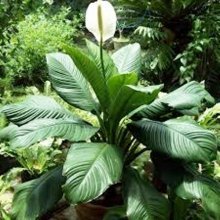
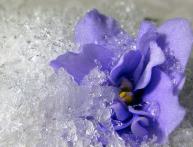

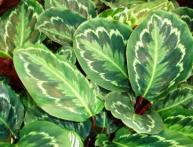
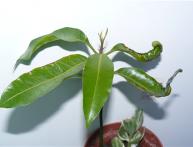
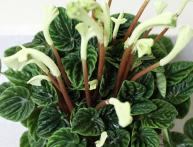



Comments
Spathiphyllum is one of my favorite plants. We have been friends with him for a long time, we try to respond to each other with gratitude: I water and feed, and he pleases me with his beautiful foliage and flowering.
Judging by the description, this plant loves good watering in the summer, the main thing here is not to overdo it and not to overwater this flower, otherwise it may rot. Proper watering is the basis for plant health.
From one “female happiness” given by my husband, I have already grown into 8 pots in two years. But they bloomed only once for me. The reason is a lot of chlorine in the water! Now, before watering, I began to filter and settle the water.